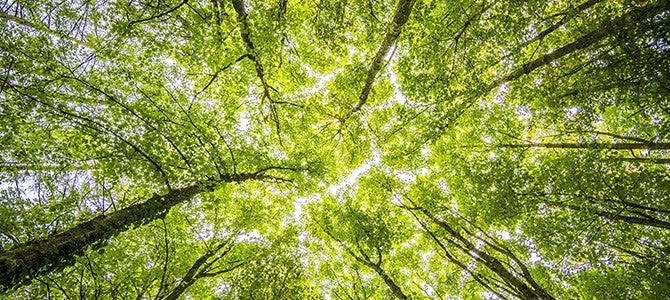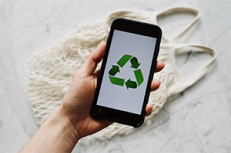Sustainable and Environmentally Friendly Packaging Solutions at Nu Skin
June 20, 2020

At Nu Skin, we believe in the importance of doing our part to protect the planet. That’s why we’re focusing on sustainable packaging.
What is Sustainable Packaging?
Throughout the world, packaging is used to distribute products we all love and need in our daily lives. The problem is there are a lot of us. Globally, we produce an estimated 300 million tons of plastic waste each year, which is roughly the weight of the entire population! It is estimated that if we continue at our current usage rate, there will be more plastic in the ocean than fish by 2050.
So, what can we do about it?
At Nu Skin, we’ve set aggressive, yet attainable, sustainability goals focused on improving the environmental impact of our products.

As part of those efforts, we’ve set a goal to assess, score, and improve the environmental impact of 100% of our products by 2023. To do this, we look at the entire life cycle of a product – from the beginning as it’s sourced from various locations around the world, down to where and how the consumer disposes of the product.
A key part of that life cycle process is evaluating the packaging the product comes in.
To improve the environmental impact of our product packaging we’ve developed an environmental impact scoring system. Part of that system looks at the packaging design of our products through the lens of the 5 R’s – Reduced, Recycled, Recyclable, Reusable, or Renewable. As we evaluate each design, we look at ways to improve these categories while maintaining a luxurious and innovative packaging solution that fits the needs of our customers.
Sustainable Packaging Options
Recycled
With literal tons of plastic being disposed of every day, one of the best ways we can reduce our impact on the planet is to change the way we view plastic. Instead of seeing it as waste that can no longer be used, we can look at it as a resource to be reused. Plastic that has already been recycled and can be repurposed into another package is called Post-Consumer Resin (PCR). PCR is recycled plastic which could be on its second, third, or even seventh life! By increasing the amount of PCR used in our packaging, we can reduce the amount of virgin plastics needed and close the gap on single-use plastics.
Recyclable
Recycling standards differ around the world, so ensuring recyclable packaging where a product is sold can be complicated. However, with cooperation and partnerships, it’s also one of the best ways to improve the market for recyclable packaging. Two of the most commonly recyclable plastics are HDPE and PET. To improve a product’s recyclability, it’s important to increase the amount of commonly recycled plastics used in the creation of the product, along with the possible markets in which the product can be recycled.
Reduced
One of the best ways to improve the environmental impact of a product’s packaging is to do so during the design phase. Sustainable package design involves the use of innovative techniques to 1) improve the functionality of the package for the consumer while 2) reducing the amount of material(s) needed. For example, in 2019 we refreshed our ageLOC LumiSpa package to a sleeker, more user-friendly and sustainable design. From this single change, we’re saving 178 tons of paper annually. That’s the equivalent of over 3,000 trees a year!

Reusable
One of the best ways to reduce single-use plastics is to create an innovative and reusable packaging design. Plastics can take hundreds of years to biodegrade if sent to the landfill. By looking for ways to help our consumers reuse their packaging rather than throw it away, we’re able to help decrease the amount of plastic waste that ends up in already overflowing landfills.
Renewable
Renewable plastics, also known as bioplastics, are made from renewable plant-based resources such as soy, corn, or tapioca. This is in place of plastics that have generally come from non-renewable, petroleum-based sources. The use of these plastics can be beneficial for the environment for a variety of reasons. One of which is that many of these types of biodegradable plastic breaks down at a significantly faster rate than petroleum-based plastics.
Sustainable Packaging at Nu Skin
While there is a lot to learn about improving the environmental impact of product packaging, here at Nu Skin we are dedicated to doing our part.
“As with anything worth doing, there will always be challenges which arise but part of being a sustainable business means that we embrace those challenges and, rather than seeing them as obstacles, see them as opportunities to innovatively create positive change. As a company, we’ve tried our best to encourage a culture of bold innovation. Our people are our greatest resource and as we face the challenges that accompany being a green business as a team, it’s amazing to see the resulting outcomes.” - Ritch Wood
As we focus on the 5 R’s - Recycled, Recyclable, Reusable, Reduced, and Renewable - and work to create new sustainable practices, we invite you to think about what you can do to reduce your impact on the environment along with us.
Check out some ideas below!

-
Earth Day 2020 is right around the corner! But with the world staying home due to the disastrous effects of COVID-19, it can be disheartening and overwhelming to know what you can do to show some love towards the planet this year. Maybe your Earth Day project got cancelled, or the event you were planning on attending is postponed indefinitely. Perhaps you wanted to support a local, sustainable bus...
-
During times of uncertainty and change, it is easy to forget the effects these changes may have on our mental health and well-being. A modified work routine, adapting to different family circumstances, financial uncertainty, and much more can play a role in the way we view the world around us and how we go about our daily activities. “With all of the external and internal stressors we're currently...

